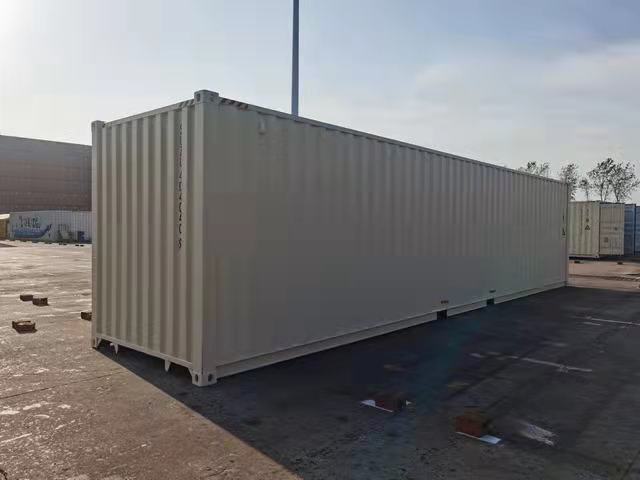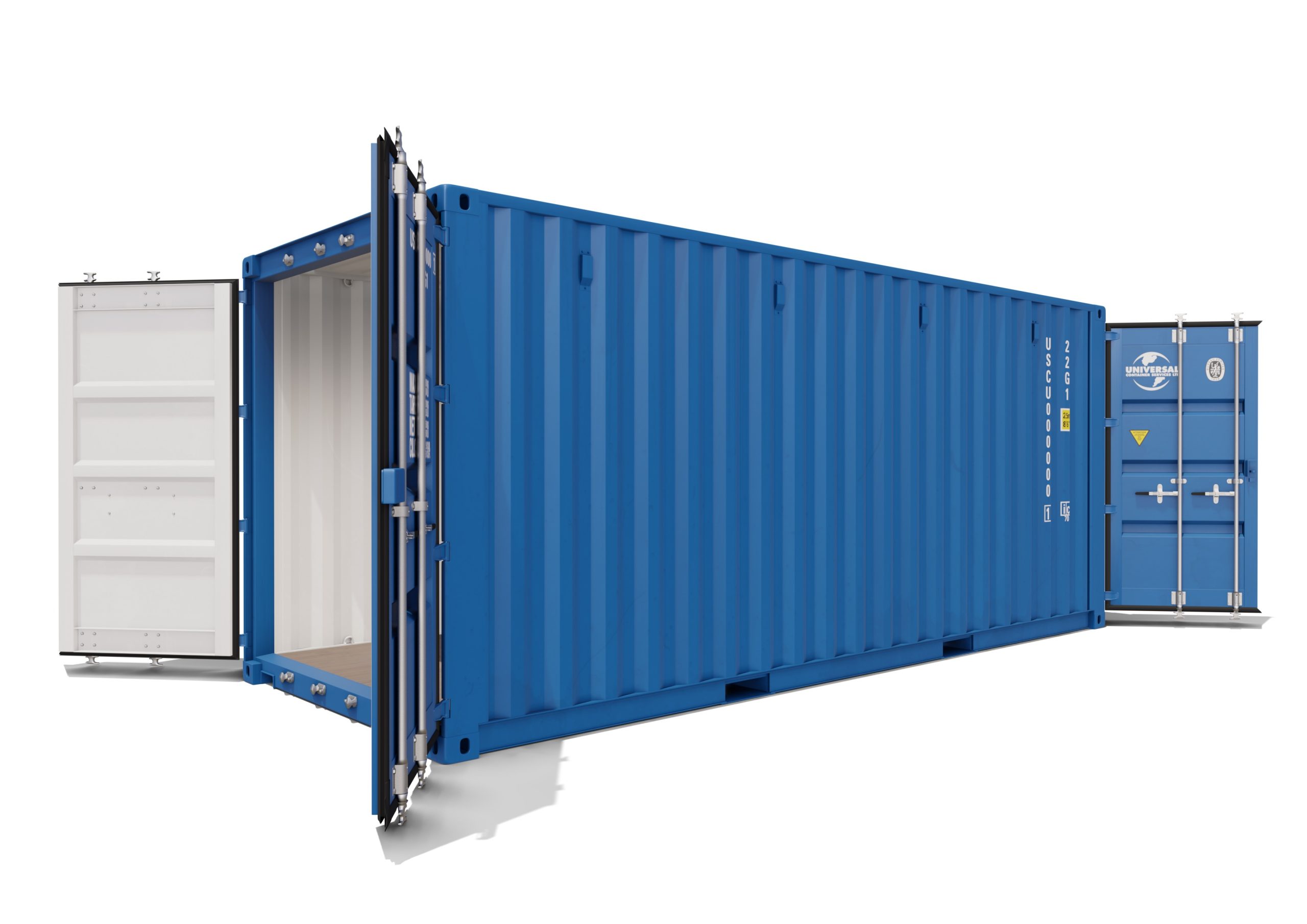The Ultimate Overview to Selecting the Right Delivery Container for Your Needs
When it comes to choosing the right shipping container, recognizing your particular demands is essential. You'll intend to take into account aspects like size, type, and material to guarantee you make the finest choice. From conventional sizes to specialized options, there's a great deal to discover. And also, budgeting for both the container and any alterations can make a huge distinction. Let's break down the vital aspects to aid you locate the excellent fit for your needs.
Understanding Delivery Container Sizes
When you're picking a shipping container, understanding the numerous sizes readily available is critical for making the appropriate decision. Delivering containers usually come in typical sizes of 20 and 40 feet, but you'll likewise discover other measurements. Recognizing the size you require depends upon what you plan to shop or transport.If you're relocating smaller sized items, a 20-foot container could be ideal, while larger deliveries commonly call for a 40-foot container. The elevation can also vary; high dice containers supply added upright room, which can be valuable for taller goods.Before making a decision, determine your cargo, and take into consideration how much space you'll require for packing and discharging. Always consider possible future requirements-- deciding for a somewhat larger container may save you problem down the line. Eventually, selecting the ideal size will improve performance and ensure your items are safe and secure during transportation
Kinds Of Shipping Containers Available
There are numerous sorts of shipping containers available, each made for particular purposes and cargo requirements. The conventional dry container is functional, ideal for general freight. If you're shipping perishable products, think about a refrigerated container, which keeps a regulated temperature. For extra-large products, high dice containers use added height, fitting taller loads.If you need to carry heavy machinery or tools, flat shelf containers provide a durable base without wall surfaces. Open-top containers enable for simple loading of high cargo, with a removable tarp covering for defense. If you're looking for versatility, take into consideration a collapsible container that can be conveniently stored when not in use.Lastly, specialized containers like tank containers are used for fluids, while vented containers are developed for bulk freight that needs ventilation. Knowing your cargo kind will certainly help you select the ideal container to satisfy your shipping requires efficiently.
Product Considerations for Durability
When picking a delivery container, the material plays a vital duty in its sturdiness. You'll wish to consider the benefits of steel versus aluminum, specifically regarding deterioration resistance. Comprehending these elements can help you make a more educated choice for your delivery requires.
Steel vs. Light weight aluminum Containers
Just how do you pick between steel and aluminum containers for your shipping needs? Beginning by considering toughness. Steel containers are robust and deal outstanding stamina, making them ideal for heavy tons and harsh conditions. They stand up to damage from effects and are typically cheaper, which can be a major aspect for budget-conscious buyers.On the other hand, aluminum containers are light-weight, which can conserve you on delivery expenses. They're less complicated to navigate and are a wonderful option if you require to transfer goods frequently. Light weight aluminum is generally extra expensive and less durable than steel. Evaluate your details requirements thoroughly, including weight, price, and the sort of cargo you'll be shipping, to make the best option for your scenario.
Rust Resistance Aspects
Picking the appropriate product doesn't simply include weight and price; deterioration resistance plays a substantial function in toughness. When picking a delivery container, think about the setting it'll face. Steel containers, while solid, can rust if not effectively dealt with. Search for alternatives with safety coatings or galvanization to improve their life expectancy. Aluminum, on the other hand, supplies all-natural deterioration resistance, making it perfect for seaside areas or humid problems. It can be much more costly. In addition, evaluate the container's use-- if it'll be subjected to chemicals or harsh weather, focus on materials that can stand up to these problems. Purchasing a corrosion-resistant container currently can conserve you from costly repair work or substitutes down the line. Pick sensibly for long-lasting advantages.
Adjustments and Customization Options
Delivering containers aren't just for moving products; they can be transformed to meet your specific demands via various adjustments and personalization choices. You can convert a standard container into a comfy workplace area, a short-lived retail click site shop, or perhaps a personal gym. The opportunities are almost endless.Think about adding windows, insulation, or ventilation to boost comfort. You might also think about electric circuitry, pipes, or also customized shelving to enhance functionality. If security's a concern, strengthened locks can offer peace of mind.For aesthetic allure, you can repaint the container or include an unique style to make it stand out. Do not ignore floor covering options-- whether you want long lasting plywood or something much more advanced, it can boost the space.Ultimately, tailoring your shipping container to fit your needs can enhance functionality and develop an one-of-a-kind atmosphere that mirrors your design.
Examining Your Transport Requirements
When it involves utilizing your modified shipping container, recognizing your transport requires is essential. Beginning by identifying what you'll be delivery-- whether it's hefty devices, retail goods, or personal products. Each kind of freight has various demands concerning size, weight, and accessibility.Next, take into consideration the range and setting of transport. Are you shipping in your area, across the country, or worldwide? This affects the container's design and capability. If you're utilizing vehicles, assure your container fits typical measurements for very easy loading and unloading.Additionally, think of transportation problems. Will your items require unique protection from weather condition or temperature level variations? If so, you might need insulation or ventilation functions in your container.Lastly, evaluate exactly how frequently you'll be carrying products. Regular deliveries might require an extra sturdy and flexible container to meet continuous needs. By addressing these elements, you'll be well-prepared to choose the right delivery container for your requirements.
Budgeting for Your Delivery Container
Establishing an allocate your delivery container is crucial for making certain a smooth acquiring procedure. Figure out exactly how much you can pay for to invest. Remember that rates can vary significantly based on size, problem, and type. New containers usually set you back more, yet made use of ones can provide significant savings.Next, take into consideration any type of additional costs you might sustain, such as transportation costs, distribution fees, and modifications. If you intend to personalize the container, consider those expenses also. Study various suppliers to contrast rates and locate the best deal that meets your needs.Don' t forget to consist of any permits or laws that might relate to your purchase and use the container. By clearly detailing your budget plan, you'll be better prepared to make informed decisions, ensuring you obtain the appropriate container without breaking the bank.
Maintenance and Care for Durability
To ensure your delivery container lasts for many years, normal upkeep is crucial. Begin by checking the outside for corrosion, damages, and damages. If you detect any problems, resolve them right away to avoid further degeneration. Clean the container occasionally, both in and out, to eliminate dirt, debris, and dampness that can lead to corrosion.Ensure the doors secure appropriately and lube the joints to stay clear of corrosion and sticking. If you're using the container for storage, consider including ventilation to reduce moisture and mold development. For extra protection, use a rust-inhibiting paint or sealant annually.If your container's located in a rough link setting, like seaside areas, you might require to raise maintenance frequency. Watch on the flooring, also; any indications of wear should be fixed right now. With these straightforward actions, you'll prolong the life of your shipping container significantly.
Regularly Asked Questions
Just how Do I Discover a Reliable Delivery Container Distributor?
To locate a dependable delivery container distributor, beginning by researching online testimonials, requesting suggestions from friends or market calls, and contrasting prices. Constantly examine their qualifications and assurance they offer high quality containers that fulfill your requirements.

Can I Lease a Shipping Container Rather Than Acquiring?
Yes, you can absolutely rent out a delivery container as opposed to getting one. Numerous suppliers provide rental options, which can conserve you money and give adaptability if you just need it for a short period.
What Permits Are Required for Container Placement?

Are Delivery Containers Weatherproof and Suitable for Outdoor Storage Space?
Yes, delivering containers are usually weatherproof, created to withstand harsh problems. Their robust building and construction maintains your items safe and secure and dry, making them ideal for exterior storage space. Simply assure correct ventilation to stop wetness accumulation inside.